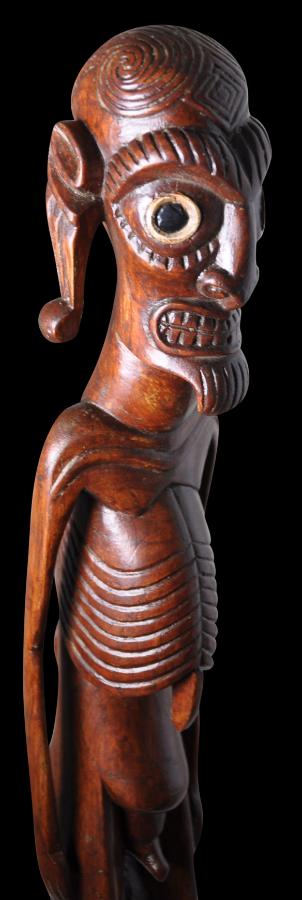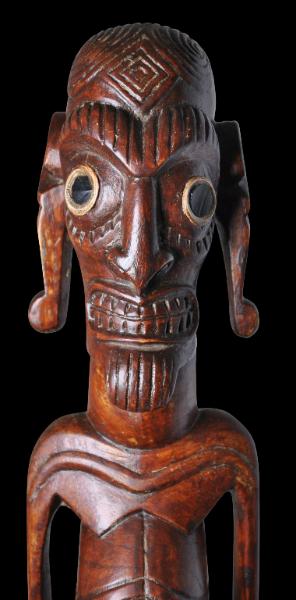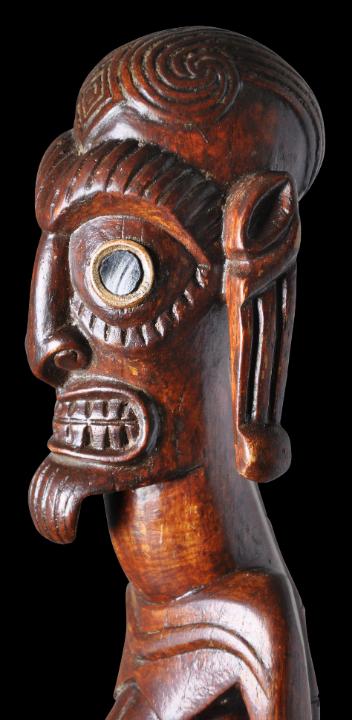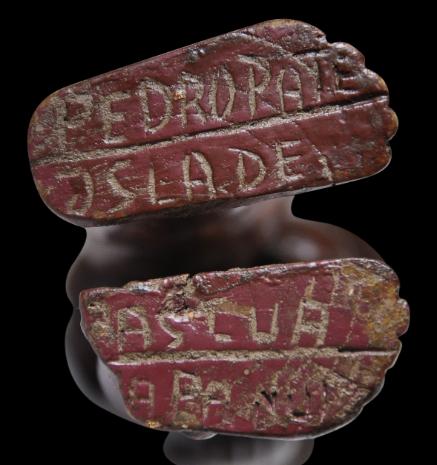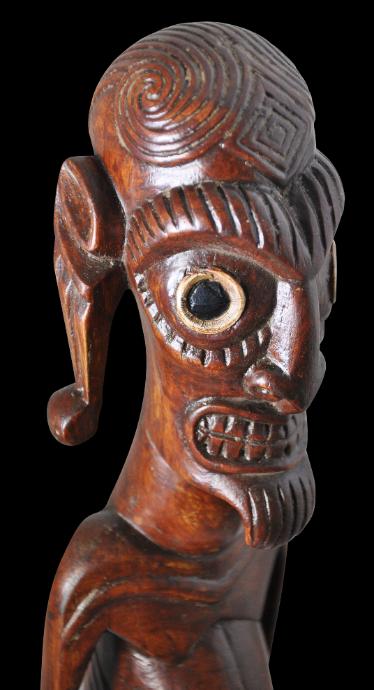
Easter Island Moai Kavakava
Carved Wooden Moai Kavakava Male Ribbed Figure signed by Pedro Pate (cf. Thor Heyerdahl)
Easter Island (Rapa Nui)
circa 1950s
height: 52cm
This well-carved, wooden Easter Island male ribbed figure (moai kavakava) is something of a curiosity. It was carved by the Easter Island master woodcarver Pedro Pate, who has been shown to be the source of some or many of the ‘ancient’ wood and stone carvings that the Norwegian ethnographer and adventurer Thor Heyerdahl, famous for his 4,300-mile Kon-Tiki voyage across the Pacific in 1947, obtained whilst on Easter Island in 1955. Heyerdahl used the carvings as supporting evidence for his theory that the indigenous people of Easter Island originally had come from South America rather than Polynesia, a claim he explored in his book Aku-Aku, published in 1958 and in The Art of Easter Island, published in 1975. Richard Conniff in an article published in 2002 in The Smithsonian Magazine demonstrates how the statues obtained by Heyerdahl which he used as evidence for his theories were produced at his behest by Pedro Pate, who then installed them in a cave again at Heyerdahl’s request so that Heyerdahl might find them. The revelations have served to tarnish the reputation of Heyerdahl, who arguably became the most famous ethnographer of the twentieth century. Heyerdahl died in 2002. It should be noted however, that Conniff’s article was published a few month’s after Heyerdhal’s death thereby avoiding challenge from Heyerdahl and the risk of defamation proceedings.
The figure follows the conventional form of a classic
moai kavakava – it stands in a powerful, striking pose with an intense facial expression. The eyes are of shell with obsidian pupils. The teeth are grimacing and the chin bearded. The arms and legs are elongated. The rib cage is exposed and extended. The ear lobes also are elongated and a geometric design is carved to the top of the head.
Originally, it is believed that most such figures in the 18th and 19th centuries were wrapped in
tapa cloth and carefully stored in the framework of houses. They would be brought out at festival times and suspended from a dancer’s neck or held in the hands.
The feet are signed in oil paint by the carver with his name ‘PedroPate’, followed by the words ‘J Slade’, and ‘Pascua’ and then ‘Rapa Nui’. ‘Pascua’ is the Spanish word for ‘Easter’.
During the latter half of the 19th century, the population of Easter Island was almost entirely depleted. Tuberculosis and other diseases had severely reduced the Island’s population and then in 1862 Peruvian slave raiders struck, and over a series of months captured around 1,500 men and women, about half of the remaining population. The slave raiders were eventually forced to repatriate those they had kidnapped, but they now carried smallpox which further reduced the remaining population. The rapid depopulation of Easter Island explains why much of the islanders’ ancestral wood carvings found their way to Europe and elsewhere – their simply was no longer any significant population that required the ancestral artifacts. But it’s also the case that later examples have also entered collections. The example is signed which is important – we know that it is later, carved by an artist whom Thor Heyerdhal apparently asked to produced wood carvings for his purposes, and this allows for comparisons between this and earlier versions. But it is well carved and decorative in its own right. It is in fine condition. There is an old chip to the left heel, but that is the only loss; it seems to be almost contemporary with the piece.
References
Conniff, R., ‘Kon artist?’ in The Smithsonian Magazine, July 2002.
Glenny, M., ‘Into the wild’,
London Review of Books, March 19, 2015.
Provenance
private collection, northern England
Inventory no.: 2991
SOLD

